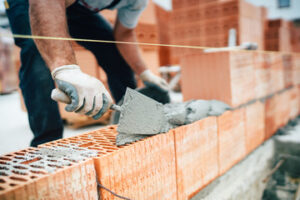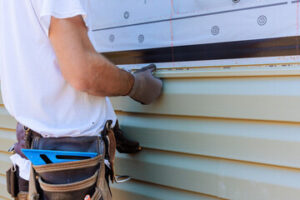Charleston Masonry Masters has many benefits to offer in both residential and commercial construction. Its structural strength, durability, and energy efficiency are key advantages.

When inspecting homes with brick or concrete block masonry walls, any crack larger than 1/8 to 1/4 inch should be evaluated further. Any lateral movement should also be evaluated by a professional.
Advanced masonry construction techniques allow architects to create complex geometric patterns and layered textures that make buildings stand out from the crowd. Masonry is also being combined with other materials to enhance design features and meet modern environmental standards. The result is a unique and versatile building material that offers the best of both worlds.
Throughout history, masons have experimented with coloring masonry to achieve unique visual effects and convey cultural meanings. The ancient Egyptians and Romans used colored pigments derived from minerals to accentuate the beauty of their stone structures. In the medieval period, masonry arches were sculpted to resemble a human body, reflecting the soaring spirituality of Gothic architecture. The stone facades of Frank Lloyd Wright’s Fallingwater, meanwhile, blend ingeniously with the surrounding landscape and demonstrate how masonry can be used to craft truly unique buildings.
The use of masonry has evolved into an art form in its own right. Modern trends in masonry design include incorporating smart technology into home construction, using sustainable practices that reduce environmental impact, and creating visually appealing and functional structures. For example, heated driveways and energy-efficient stone facades are innovations that can increase the utility and beauty of a masonry home. The latest brick colors and styles are also being used to create eye-catching designs. Fluted masonry, for instance, is a popular choice that adds texture and depth to walls.
Strength
Masonry is a durable building material that stands up to harsh weather conditions and can last for centuries. Masonry walls resist damage from fire, termites, and moisture. And masonry structures are insulated, contributing to energy efficiency.
Whether in brick, natural stone, or concrete block masonry, the materials used in masonry construction deliver unparalleled strength and durability. Brick masonry offers superior resistance to corrosion, while stone and concrete provide long lifespans with low maintenance requirements.
In addition, masonry materials offer a unique aesthetic that enhances the architectural value of buildings and landscapes. Masonry walls are also non-combustible, making them safer for occupants during a fire.
Modern masonry technologies like 3D printing and robotics allow masons to create custom masonry units that interlock in specific ways, maximizing strength and efficiency. These advanced techniques can also reduce labor costs, speed up construction, and improve precision.
A key component of masonry construction is the binding of masonry units with mortar, which creates a strong and watertight seal. Masonry units come in a variety of shapes, sizes, and colors, and require specialized skill to install. During laying, masons must carefully place each unit in a pattern that is both functional and visually appealing. Proper laying ensures that the structure is sturdy and can withstand weather conditions.
The choice of masonry material and mortar also impacts the final strength and durability of the structure. For example, a standard CMU with hollow cores reduces material demands while maintaining load capacity, provides pathways for utilities and reinforcement, and improves thermal performance. The precise proportioning of Portland cement, hydrated lime, and sand determines not only masonry unit workability but also wall performance. For example, Type N mortar delivers adequate compressive strength for above-grade walls while Type S mortar offers increased strength for below-grade and structural applications.
Durability
Masonry structures are known for their longevity, lasting decades or even centuries with proper maintenance. This durability is especially important in commercial construction, where buildings must withstand heavy use and environmental conditions that can affect other building materials. A durable masonry structure can help reduce overall building costs by eliminating the need for frequent repairs or replacements.
Masonry is also an excellent choice for a green building project. Its energy efficiency comes from the material’s ability to store and absorb heat. Bricks in particular are designed with thermal mass, which means they hold and retain heat from the sun during the day, and then release that heat throughout the night, providing an energy-efficient solution for homes. In fact, a brick home with an air barrier and insulation can reduce energy costs by up to 30%.
In addition, a masonry structure is highly resistant to fire, allowing it to protect the interior from damage and reduce the risk of structural collapse. Masonry can also incorporate recycled materials, including reclaimed bricks and crushed concrete, which reduces the need for new resources and supports a circular economy.
Whether you’re designing a modern commercial facility, restoring an historic property, or building a new home consider utilizing stone, brick, or concrete masonry for its beauty and durability. These sustainable benefits are important in a climate like ours, where the seasons change and energy costs are on the rise. Choosing to build with a masonry contractor who can provide both beauty and energy efficiency will save you money now and for years to come. Contact Top Hat Masonry today for a free estimate on your next project. We specialize in quality masonry construction and repair that will last for generations.
Energy Efficiency
The materials used in masonry construction can provide a variety of energy-efficiency benefits. For instance, sandstone and other types of rock quarried from natural sources tend to absorb, store and slowly release heat, creating an effective form of thermal mass for buildings. This helps stabilize indoor temperatures, which reduces the reliance on artificial heating and cooling systems. It also shifts energy use to off-peak periods, which lowers utility bills.
Brick, stone, concrete and other masonry building materials also offer natural insulation. In addition, tuckpointing repairs and other proactive maintenance help improve insulation properties of masonry walls. When combined with modern insulated doors, windows and roofing, these improvements can significantly lower energy costs.
Besides the type of masonry material used, the density and configuration of its blocks can greatly enhance the building’s energy efficiency. For example, lightweight concrete blocks with hollow cores are ideal for load-bearing structures since their empty cores offer great compressive strength, but not much transverse or lateral resistance. Filling these blocks with an insulating material or installing a double-wythe wall can dramatically increase the energy-efficiency of these types of structures.
Another way masonry can boost energy-efficiency is through its passive solar design features. When positioned to face the sun, a masonry structure can absorb and retain solar heat during the day, and then gradually release this heat through the night, reducing a home’s need for artificial heating and cooling.
Sustainability
As the world becomes increasingly concerned about environmental impact, sustainability has become a major focus in construction. Masonry is a natural fit for this movement, as it offers a number of sustainable benefits that go beyond mere energy efficiency. From the use of recycled and renewable materials to superior temperature regulation, masonry can provide the building solutions necessary for a greener future.
Using reclaimed brick and stones from existing structures cuts down on the need for new materials and prevents these materials from being sent to landfills. Locally sourced stone reduces transportation emissions and blends naturally with the environment. Additionally, concrete masonry blocks can be made with a reduced amount of cement and sometimes incorporate industrial byproducts like fly ash, further reducing carbon dioxide emissions.
The durability of masonry also helps cut down on maintenance costs. Masonry is resistant to rot, mold, and termites, which can significantly lower the cost of care and upkeep. Additionally, non-combustible construction means that masonry buildings are safer and can remain operational during a fire.
For commercial projects, a masonry facade conveys an image of stability and permanence, qualities that can make a big difference to potential clients and customers. The material’s versatility allows architects and builders to create an exterior that is as visually appealing as it is durable, ensuring that your business stands out in the best way possible.
Sustainable construction involves creating a building that is environmentally responsible throughout its entire life cycle, from the materials used to its eventual dismantling and disposal. By choosing masonry as your construction material, you can be sure that you’re aligning yourself with the latest environmental regulations and potentially even benefitting from government incentives provided for eco-friendly projects.
